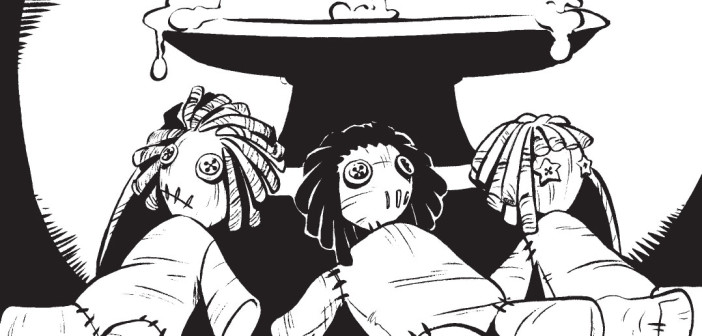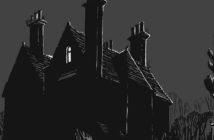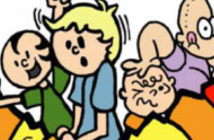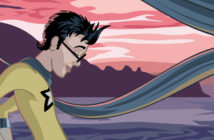For anyone who’s curious about the originality of teenage witch stories, I have the answer: said originality, if it was ever there to begin with, is now long dead. We sat through the melodrama of The Craft. We suffered the network pollution of Charmed. We even chuckled at the absurdity of The Covenant. But Oni Press’ latest release, Spell Checkers, is simply too much to take. It’s definitive proof that teenagers with the powers of witchcraft are not fun and interesting, but rather boring and nauseating.
I’m not really sure what inspired writer Jamie S. Rich to pen this story. Personally, I couldn’t have been less interested in this comic book if it was a graphic rendition of my home owner’s insurance policy. At its heart, this is a story that celebrates teenage superficiality, in which the heroes are rewarded for behaving badly and the so-called villains are punished for seeking some well-deserved retribution.
Spell Checkers opens with a trinity of young witches making a pact. As long as they are united and their magical doll-totems remain intact and in their possession, they will be all-powerful. It’s an uplifting note to begin a book on, considering that the story immediately transitions over to that pesky taint of superficiality I mentioned earlier. One of the three witches, Cynthia, who is now fifteen, has suffered the indignation of having a fowl message carved into her locker with, even worse, magical writing.
And so, the plot of the comic book is set into motion. Cynthia, along with her witch-trio sisters, Kimberly and Jessica, set out for revenge against the renegade witch in their school who is using her powers to smear the girls’ miserable reputations. This is where I begin asking myself the same question over and over again: don’t these three girls deserve a little pain and suffering? Though the comic book is not clear on this point, I get the impression that the rest of their school is aware that they’re not normal, and they use this supernatural aura to run the locker-lined halls of their school as tyrant sorceresses. Where are those fanatical puritans when you need them?
What’s worse is that this problem leads into another problem with the comic book—it’s very premise. I have not been in high school for seven years, but what I remember of it, the social politics are fleeting at best. But here we have 130 pages that celebrate the pettiness of immaturity and the cruelty of childhood. This is evident as the three witch-sisters turn against each other out of suspicion of who’s actually causing all of the mischief around the school. Because what’s worse than wielding limitless arcane knowledge? I guess using it to make crude jokes about fish odors and lesbianism.
There are also quite a few problems with the actual mechanics of the book’s story. Because I disliked the three main characters so strongly, I focused my attention on the actual rules of the witchcraft being used. The three girls draw their powers from magical dolls that are consecrated in each others’ blood. And, what witch story doesn’t have a grimoire? There’s one here, and each witch takes her turn with the book, studying it and learning new spells. And yet, these spells are so simple it’s not even necessary to study them at all. For example, so Kimberly can smoke in class, she simply says “bubble,” and an enchanted bubble appears around her to contain the smoke. This is what the great witches of old transcribed into their dusty tomes: easy tips to help bratty teens go forth in life with their dirty habits? This is the legacy of great real-world occultists like John Dee and Jack Parsons. It’s a tragedy.
It’s unfortunate that the artwork of Nicholas Hitori de doesn’t lend anything to this comic. His illustrations are incredibly sketchy, with lines appearing blurred and sloppy. These drawings look like rough drafts instead of final products. But the real problem with the artwork is the mass of uncountable Ben-Day dots. I don’t know the reason for them, whether it’s stylistic or for printing costs, but they are so intrusive to the artwork that they left me dizzied.
Spell Checkers amounts to nothing more than a long-winded exercise in tedious pop-culture references and sarcastic teen dialogue. Everything is built atop a hollow and tired premise that should challenge the imagination instead of boring it. But what made this book such a disappointment were the three girls at the heart of the story. They’re wicked, vile, and loathsome twits, who use their powers to belittle, hurt, enslave, and even kill innocent people—and I do not love them for it. Instead of cheering for them, I only wanted the book to end as soon as possible.
This comic book review originally appeared on Broken Frontier.




